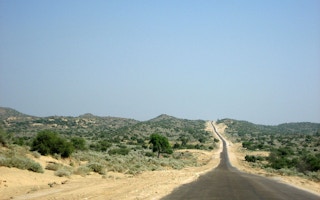Till now, Pakistan has not used the bulk of its coal reserves – some of the largest in the world – for power generation. Not any more.
Within the last month the government in Islamabad has signed a number of financial and technological agreements with China aimed at exploiting massive coal reserves at the Tharparkar mine in Sindh province, in the south of the country.
Under the terms of the agreements, 3.8 million tonnes of coal will be produced each year at the Tharparkar open-cast mine to fuel a 660MW power plant and other facilities.
The estimated cost of the project is US$2bn: China’s banks and private companies will supply US$1.5 billion in loans, while Pakistan will contribute US$500 m in both private and public finance.
High risk
Scientists say the mining and burning of coal is one of the main drivers of climate change from human causes. The coal at Tharparkar is mainly lignite – one of the least energy-intensive and most polluting types of coal.
Pakistan is thought to be one of the countries most at risk from climate change: in recent years it has endured a number of floods and droughts, and in the summer of 2015 more than 1,200 people died in a searing heatwave.
Despite government declarations that it would prioritise climate change, Pakistan has shown little appetite for tackling the issue.
At the recent climate summit in Paris, Pakistan pledged to reduce its emissions of climate-changing greenhouse gases by 5 per cent over 2012 levels by 2030 – a figuresharply criticised as being far too modest by a number of the country’s own climate experts.
The energy produced by the lignite deposits at Tharparkar will be mainly directed at helping alleviate serious power shortages in Karachi, a city of more than 20 million people which is Pakistan’s main industrial centre.
Oil and water
At present Pakistan depends on imported oil for 65 per cent of its energy, while hydro makes up an additional 30 per cent of the national energy mix: there are also three nuclear power plants, and wind and solar are fast-growing energy sources.
Environmentalists say the new coal-powered power plants will only worsen the country’s serious pollution problem. Karachi is already among the world’s most polluted cities.
The development of the Tharparkar coal field is part of an ambitious multi-billion dollar Pakistan/China economic development programme aimed at linking the remote western provinces of China to Karachi and other ports on the Arabian Sea.
China – the world’s biggest emitter of greenhouse gases – has pledged to cut back on the use of coal for power generation.
But critics say Beijing is pursuing contradictory policies – cutting back on pollution at home, while encouraging heavily polluting projects abroad.










